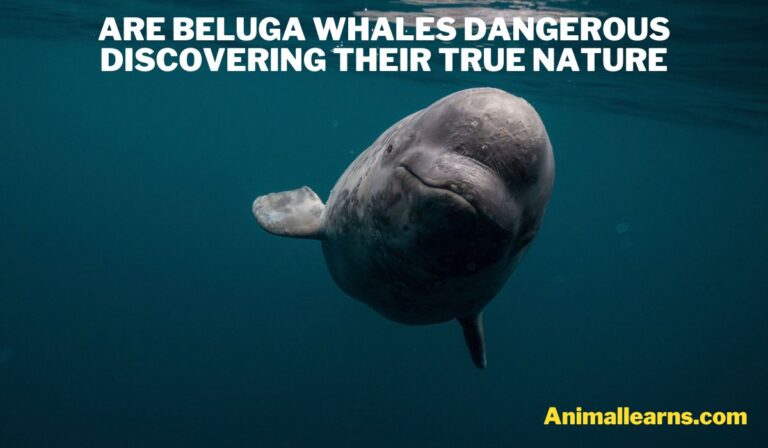Top10 Amazing Examples of Clumsy Animals – Animallearns

Clumsy Animals do not mean that they cannot live in the wild or hunt, rather they perform such strange actions that people call clumsy Animals. Animals that we think are clumsy are so talented that we cannot measure them.
Such actions they do because of their physical structure or the environment in which they are living. Due to this such animals often slip and fall.
If animals were as sophisticated as humans, they would consider people to be clumsy. If this weird behavior in animals is seen, then humans must also be a strange species because we consistently engage in such strange conduct in our everyday lives.
Humans love such animals because they attract the interest of humans due to their movements. In this article, we will read about clumsy animals/ mammals and attract the interest of humans.
Clumsy Animals List
Contents
- Giant Panda
- Sloth
- Koala
- Solenodons
- Giraffa
- Aardvark
- Wombat
- Capybara
- Tapir
- Tasmanian Devil
Giant Panda
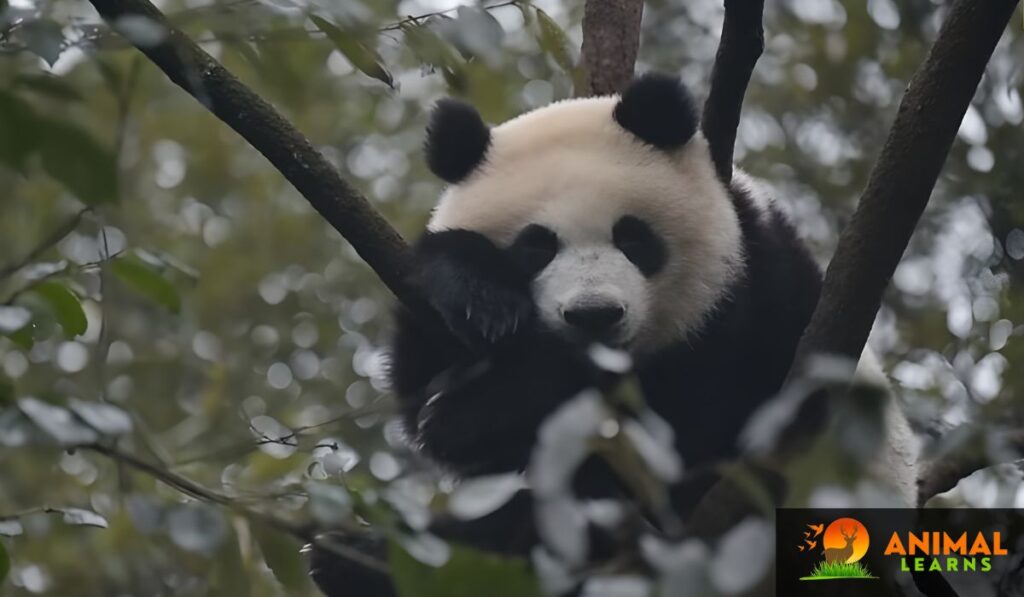
| Attribute | Giant Panda |
| Weight | Approximately 85-160 kg (187-352 lbs) for adults |
| Size | Height: About 60-90 cm (2-3 ft) at the shoulder; Length: Approximately 1.2-1.9 m (4-6 ft) |
| Group | Solitary, except during the breeding season or when a mother is with her cubs |
| Clumsy Reason | Clumsy gait due to the panda’s large size, round body, and relatively short legs; primarily a result of evolutionary adaptations for bamboo eating. |
Pandas are thought to be clumsy and awkward animals. When we watch these cute animals rolling on the ground or tumbling around their enclosures, it’s difficult not to laugh.
They certainly aren’t the most graceful animals in the world. But beyond their endearing exterior is a darker side. It is possible for mother pandas to accidentally kill their cubs, which is considered awkward.
Pandas may even be thought to be less clever than other animals by some people. Even if these animals are fascinating, it’s obvious that they follow their own rhythm, even if they make mistakes along the way.
Sloth

| Attribute | Sloth |
| Weight | Varies by species: 7 to 19 pounds (3 to 8.6 kg) |
| Size | Varies by species: 18 to 31 inches (45 to 79 cm) in length |
| Group Behavior | Solitary or occasional social interactions; mostly solitary |
| Clumsy Reason | Sluggish metabolism, slow movement, low-energy diet, and adapted for life in trees. Sloths have reduced muscle mass and slow reflexes, which contribute to their perceived clumsiness on land. |
With their laid-back way of life and charming facial expressions, sloths have won the hearts of many animal enthusiasts. Their comparatively passive life, which is mainly spent in the treetops, has an odd charm that makes them a popular topic for videos.
These adorable but not particularly graceful arboreal mammals are hardly the pinnacle of elegant creatures. Their unhurried motions could be mistaken for awkward ballet, which adds to their unique charm.
Indeed, sloths are infamously uncomfortable, to the point where their gaffes can occasionally have dire repercussions. There have been reports of sloths falling or tripping in their attempts to get back to their trees, sometimes with disastrous results.
Koala
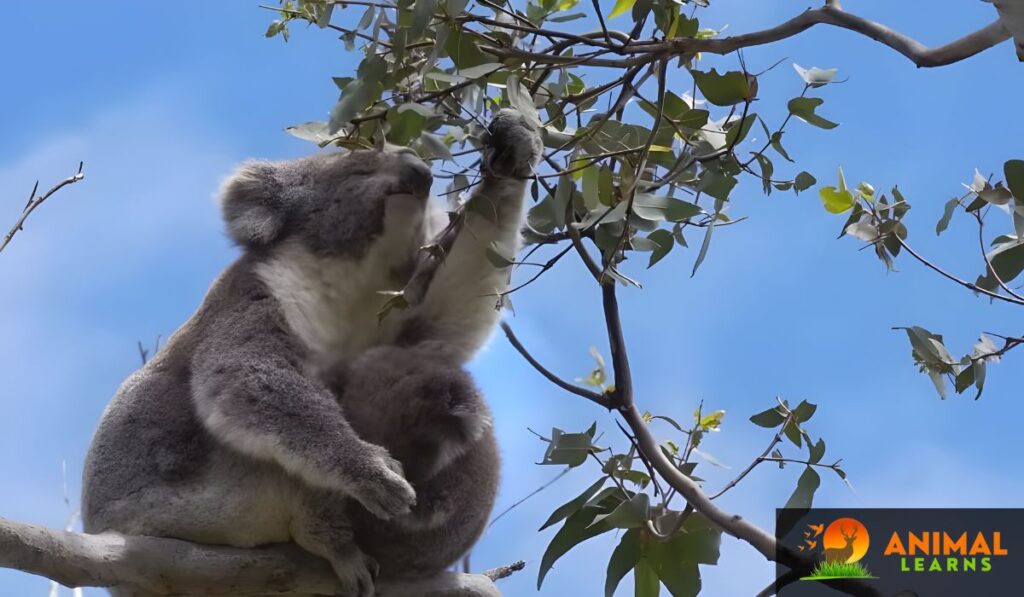
| Characteristic | Koala |
| Weight | 8-15 kilograms (18-33 pounds) |
| Size (Length) | Approximately 60-85 centimeters (24-33 inches) |
| Group Behavior | Solitary (mostly) |
| Clumsy Reason | Koalas love to stay on trees. They have big claws to climb and a special stomach to eat eucalyptus leaves. They are not good at walking on the ground because their legs are made for holding branches. They also eat very little, so they don’t have much energy. |
Adorable animals that are sometimes mistaken for bears, koalas are actually marsupials and are regarded as one of Australia’s most iconic species.
Koalas have frequently been referred to as the most boring mammal in the natural realm, despite their obvious cuteness. This reputation is a result of their usual activities, which mostly consist of lazily rolling around, reclining, and eating what appears to be an endless supply of eucalyptus leaves.
One cannot help but notice koalas’ unnatural motions when watching them, especially in video footage, especially when they are on the ground. They are not recognized for their quickness or exuberance. Although their slow movements could be seen as awkward, they have a certain allure.
Solenodons
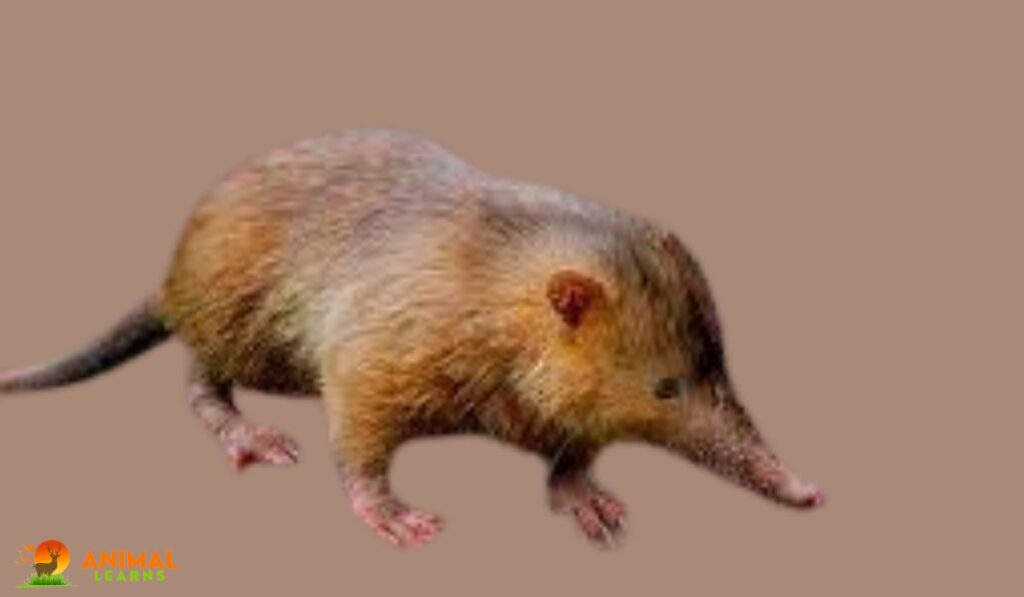
| Attribute | Value |
|---|---|
| Scientific Name | Solenodontidae |
| Size | Approximately 28 to 32 cm (11 to 12.5 inches) |
| Weight | Around 600 to 1,000 grams (1.3 to 2.2 lbs) |
| Group | Mammals |
| Lifespan | Up to 10 years |
It’s likely that you are unfamiliar with solenodons. To get an idea, picture an oversized mouse with a long, pointed snout.
To put it another way, solenodons are incredibly awkward. They walk slowly and clumsily, creating a zigzag pattern with their gait. They are therefore vulnerable to assaults by the majority of animals, such as dogs and cats.
Furthermore, Stanford University research indicates that solenodons have outwitted mortality by opting to consume anything in order to survive, despite their awkwardness when it comes to traversing great distances for food.
Giraffa
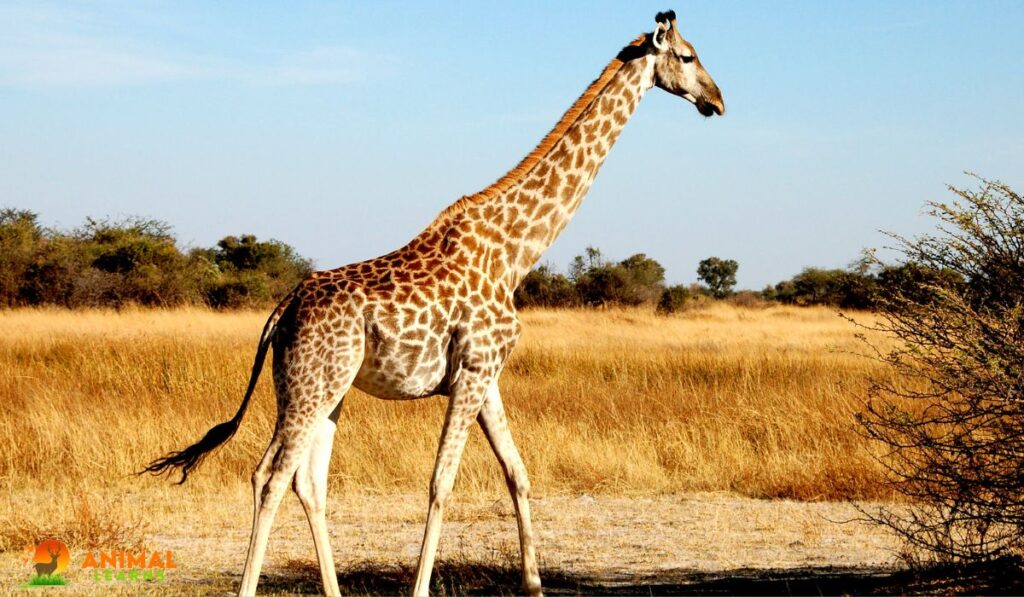
| Feature | Description |
|---|---|
| Scientific Name | Giraffa camelopardalis |
| Size (Height) | Males: Up to 5.7 meters (18.6 feet), Females: Up to 5.3 meters (15.7 feet) |
| Weight | Males: 1,100 to 1,915 kg (2,420 to 4,215 lbs), Females: 700 to 1,181 kg (1,540 to 2,600 lbs) |
| Group | Even-toed ungulates (Artiodactyla) |
| Lifespan | 20 to 25 years in the wild, slightly longer in captivity |
As the tallest animal on the earth, giraffes hold the title. Their legs and elongated necks, which are longer than the typical person’s (about six feet), also contribute to their amazing lengths.
Even though these animals walk just as well as other animals, it makes sense that they would be awkward due to their large legs.
When the giraffes are ready to sip water, the issue occurs. The unfortunate creatures have to bend over to get to the water, which is around ten feet. They also spread their legs out in an unpleasant, awkward way in an attempt to get into the optimal position, hoping that they won’t fall.
Aardvark
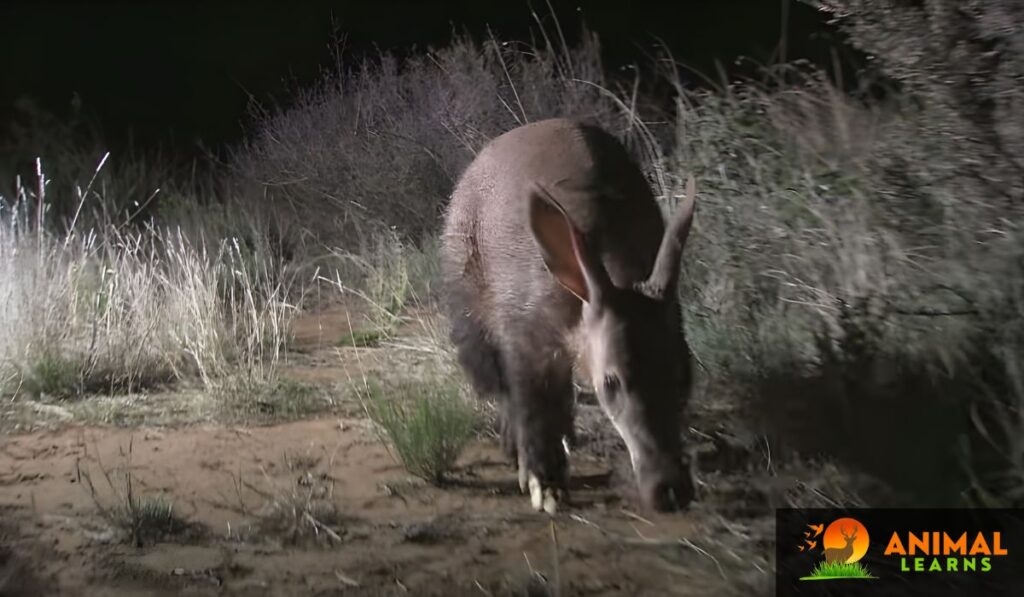
| Attribute | Aardvark |
| Weight | 110 – 180 lbs (50 – 82 kg) |
| Size | Length: 4 – 4.5 ft (1.2 – 1.4 m) |
| Height: 1.8 – 2.2 ft (0.5 – 0.7 m) | |
| Group | Solitary |
| Clumsy Reason | They are clumsy because they have very long ears, slow movements, and bad eyesight. They don’t move fast or smoothly, but they are good at eating their favorite food and digging holes to live in. |
What do you get when you cross a pig, a rabbit, and a kangaroo? The answer is the aardvark, one of the most fascinating animals in Africa.
The aardvark may look like a clumsy and awkward creature, with its long nose, big ears, and short legs. But don’t let its looks deceive you. The aardvark is actually a master of digging and hunting.
It can use its powerful claws to dig up to 2 meters deep in just 15 minutes, creating burrows for shelter and food. It can also sniff out ants and termites with its keen nose, and lick them up with its sticky tongue.
The aardvark is not clumsy at all. It is simply different from other animals, and that’s what makes it so amazing.
Wombat
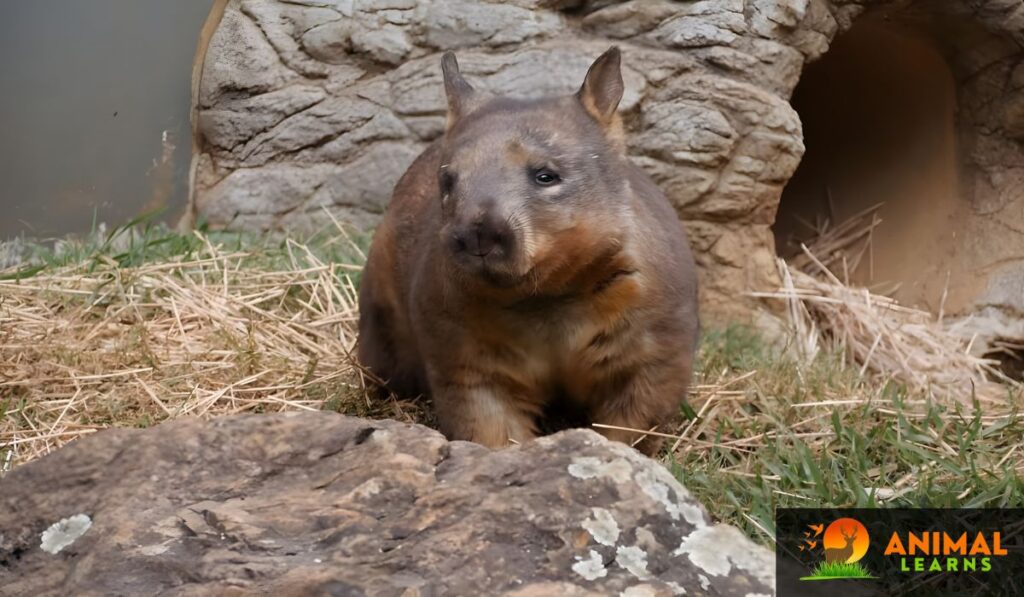
| Characteristic | Description |
| Weight | Typically between 20 to 35 kilograms |
| Size | Approximately 80 to 130 centimeters in length (including tail) |
| Group Behavior | Solitary and territorial, with burrow systems |
| Clumsy Reason | They are big and round animals with short legs. They are not good at walking on land. They can dig very well, but they are not good at moving fast or smoothly. |
Have you ever seen a wombat waddle? The Wombat is also included in the list of clumsy animals. These cute and cuddly animals are native to Australia, where they live in burrows and feed on grasses and roots. But they are not very good at walking.
They have short legs and a heavy body, which make them slow and clumsy. They often bump into things or fall over when they try to run. But don’t judge them by their clumsiness. Wombats are actually very smart and strong.
They can dig tunnels up to 30 meters long with their sharp claws, and use their hard backsides to block predators from entering their homes. Wombats may not be graceful, but they are amazing animals that have adapted to their harsh environment.
Capybara
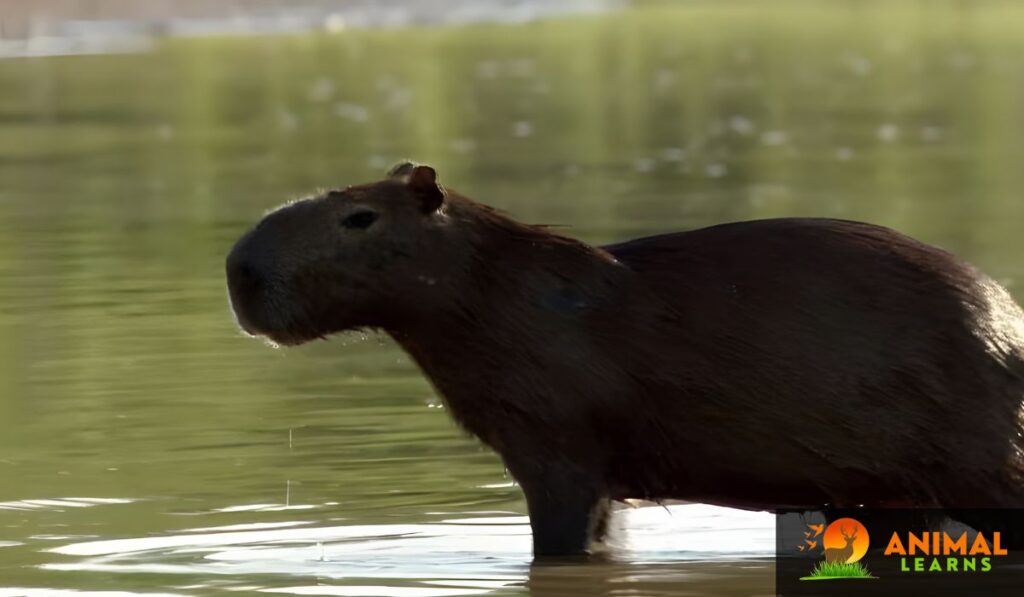
| Characteristic | Capybara |
| Weight | Approximately 77-146 lbs (35-66 kg) |
| Size | Length: 3.3-4.4 feet (1-1.3 meters) |
| Height: About 20 inches (50 cm) | |
| Group Behavior | Highly social and gregarious; they live in groups called “herds” or “troops” |
| Clumsy Reason | Capybaras are big animals with short legs. They look clumsy when they walk or run on land. But they are very good at swimming, and their body is made for water. They don’t care about being clumsy on land, because they are fast and smooth in the water. |
Do you know what the largest rodent in the world is? It’s the capybara, a friendly and social animal that lives in South America.
Capybaras love to hang out with their friends and family, and they can even get along with other animals like birds, monkeys, and crocodiles. But they are not very good at walking. They have big bodies and short legs, which make them clumsy and slow.
They often get stuck in bushes or fall into the water when they try to move around. But don’t worry, capybaras are great at swimming.
They can hold their breath for up to five minutes, and use their webbed feet to glide through the water. Capybaras may be clumsy on land, but they are graceful in the water.
Tapir
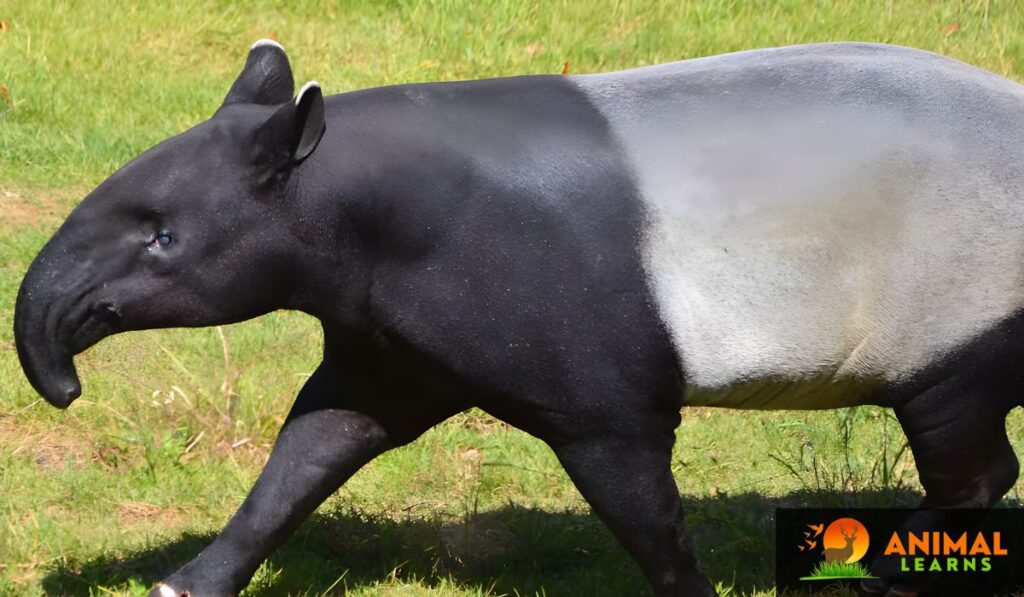
| Attribute | Tapir |
| Weight | 500-800 kg (1100-1760 lbs) |
| Size | Approximately 1.8 to 2.5 meters (6 to 8 feet) in length |
| Group | Solitary or in small family groups |
| Clumsy Reason | They have a big body and short legs. They can move clumsily in thick plants or hard places. |
What do you get when you cross an elephant, a pig, and a horse? The answer is the tapir, one of the most adorable animals in the world.
Tapirs are mammals that live in the forests of Asia and South America. They may look clumsy and slow, with their big bodies, short legs, and funny noses. But they are actually very smart and adaptable.
They can use their long noses to grab leaves and fruits from the trees and to sniff out danger. They can also sneak through the bushes without making a sound, thanks to their soft fur and round shape. Tapirs are not only good at walking but also at swimming.
They can dive into the water and hold their breath for up to 10 minutes, using their noses as snorkels. Tapirs may seem clumsy on land, but they are elegant in the water.
Tasmanian Devil

| Attribute | Tasmanian Devil |
| Weight | 6 to 12 kg (13 to 26 lbs) |
| Size | Length: 51 to 79 cm (20 to 31 inches)<br> Height: 30 cm (12 inches) at the shoulder |
| Group | Solitary or small family groups |
| Clumsy Reason | Tasmanian Devils are clumsy animals because they have a big body and short legs. Their body is low to the ground, which helps them find food, but also makes them trip and tumble when they move fast. Some people find their clumsiness cute, but it is actually a way for them to survive as scavengers. |
Have you ever seen a Tasmanian Devil in action? These furry animals are native to the island of Tasmania, where they are the largest carnivorous marsupials.
They may look cute and cuddly, but they are actually fierce and ferocious. They can eat almost anything, from insects to birds to sheep.
They have powerful jaws and teeth that can crush bones and tear flesh. But they are not very good at walking. They have short legs and a heavy body, which make them clumsy and slow.
They often trip and fall when they run or bump into things when they chase their food. But don’t judge them by their clumsiness.
Tasmanian Devils are amazing animals that have survived many threats, from disease to habitat loss. They are also very loyal and caring, forming strong bonds with their mates and offspring.
Tasmanian Devils may seem clumsy, but they are also brave and beautiful.
Clumsy Animals: From Cub Blunders to Sea Snafus
Among the fascinating traits found in the animal kingdom, clumsiness adds a delightful touch to their diverse behaviors.
From cute clumsy animals like fluffy panda cubs stumbling over tree branches to the comical antics of clumsy sea animals like seals slipping and sliding on rocks, the world of wildlife never fails to entertain.
But it’s not just the adorable clumsiness of baby animals or the awkward waddle of penguins that captures our attention.
There’s a whole spectrum of clumsiness across species, from smart but clumsy animals like the octopus fumbling its way through coral reefs to the graceful gazelle’s occasional slip-up.
As we delve into this charming realm, we find that animals are clumsy for various reasons, each revealing its unique personality and the quirks that make them endearing.
Clumsy Creatures: The Secrets of Nature’s Bloopers
In our quest to identify the clumsy animals in the world, we stumble upon a delightful journey through nature’s quirks. It’s important to remember that clumsiness isn’t necessarily a flaw; it often adds character and charm to an animal’s identity.
Some may wonder what is the most clumsy animal, but the answer is not straightforward, for there’s a multitude of candidates.
Whether it’s the endearing red panda, the penguin’s wobbly march, or the amusing antics of a seemingly clumsy albatross on land, each animal brings its own flavor of clumsiness to the table.
So, while we may ponder which animals are clumsy, let’s celebrate the captivating diversity of these creatures, cherishing their awkward yet heartwarming moments in the wild.
Conclusion
In fact, some of the most clumsy animals are also the most fascinating and adorable. For example, the Giant Panda is a cuddly bear that loves bamboo but often falls over when trying to get more.
The Sloth is a furry animal that lives in the trees but moves so slowly that algae grow on its fur. The Koala is a cute marsupial that sleeps most of the day but sometimes drops from its branch.
These clumsy mammals may not be perfect, but they are endearing and lovable. They show us that nature’s diversity extends to all corners of the animal kingdom.
FAQs
What causes animals to be clumsy?
Clumsiness in animals can be due to factors like their anatomy, size, or adaptation to certain environments, which may limit their agility.
Which animals are known for their clumsiness?
Some animals known for their clumsiness include sloths, manatees, pandas, and certain species of penguins.
Can animals improve their coordination and become less clumsy?
Some animals can improve their coordination through practice and adaptation, especially during their developmental stages, but inherent physical limitations may persist.
Do clumsy animals face challenges in the wild?
Clumsy animals may face challenges in terms of predator avoidance or hunting for food, but they often have unique adaptations that help them survive in their respective ecosystems.
Are there any benefits to an animal’s clumsiness?
While clumsiness may seem disadvantageous, it can have benefits in some cases, such as conserving energy or avoiding unnecessary movement in low-energy animals like sloths.











